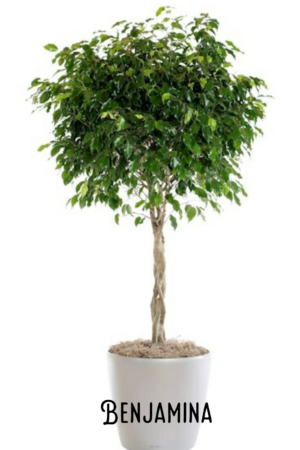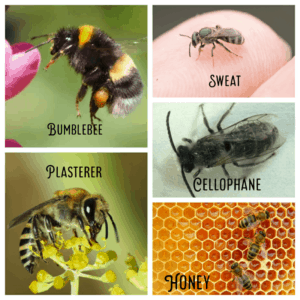What’s Budding

What’s Budding

Handle With Care
We have long been able to purchase live plant materials through the mail or online. Bulbs, seeds and bare-root plants have been sent from place to place by wagon, ship or saddlebag since people began exploring the globe. These days cuttings, fruits and nuts, and even small starter-size potted garden plants are shipped successfully to homes in appropriate weather with careful packaging.
In the last few months, some retailers have jumped in to ship houseplants in the same way. Succulents, pothos, even Ficus trees are being shipped, with mixed success. Many can be ordered in a simple decorative container and compostable packaging, usually with “free shipping” when the purchase is over $50.
I understand the appeal for those who live in remote areas, though the success of shipping to those areas will be lower than over short distances in densely populated areas. Just as with fresh flowers shipped in boxes to the consumer, so much depends on how quickly the package is opened, and the contents cared for. Light, temperature control and moisture are all urgent issues for many species. A plant package that arrives when you are away, or is delivered to a porch without temperature controls may go into shock before you can open it.
In mid-Michigan, we have several great local nurseries, florists, and greenhouses where a customer can walk in and get professional help in selecting and purchasing a healthy plant for their home or office. We are open Monday-Friday, 8-5 and by appointment. If you follow us on Facebook, Twitter or Instagram, you often see photos of our recent shipments. These plants are shipped from dock to dock in temperature-controlled semis, ensuring they are never too hot or too cold for plant health. We have new stock every two to four weeks for your consideration. Carol and I are available by appointment to meet you in our facility and walk you through selections, varieties, pricing, and even delivery and ongoing care services. We can help with selecting the right size of decorative containers to complement your décor and style. If you need something that isn’t in stock, we can check upcoming availability for you, and will gladly order the plant you need from our Florida growers.

On the Green Side




Ficus Trees
Usually pruned as a small tree or shrub, ficus are slow growers as houseplants. With proper light, pruning and care, they can live for decades. There are several popular varieties of Ficus. Benjamina, Lyrata, Ali, and Decora are the most common. Frequently small trees in the interior, they can grow to 60’ tall in the wild. They can often be seen as street trees, or pruned as hedges in Florida, but are native to Southeast Asia.
Ficus trees enjoy bright indirect or filtered light, and cannot tolerate low temperatures or drafts. Ficus trees prefer to be kept above 60 degrees. These trees shed their leaves regularly, but if they are dropping a lot of leaves at a time, the reason might take some investigation. Often, dropped leaves are caused by over or under watering, too little light, or a sudden change in location or temperature. Ficus like to be kept evenly moist, but do not like to sit in water. Check carefully for pests like scale or mealy bug when selecting a new plant.
Ficus lyrata is currently the go-to tree for interior designers. Wondering if you have enough light or adequate space for this large-leafed tree? Call Kathy or Carol for assistance. Have a Ficus that has become misshapen or too large? Send us a few photos and we can advise you, or schedule a service visit to come and prune for you.
Digging In


Wild Bees of Michigan
There are more than 450 kinds of bees in Michigan, 3,600 types of bees in the U.S. and 20,000 bee species around the world, according to Michigan State University College of Natural Science, Michigan Pollinator Initiative.
When most people think of bees, the European honey bee is what comes to mind. Brought to the U.S. by European settlers in the 17th century, honey bees are our primary means of managing crop pollination, but they are only one species. Wild bees are beneficial pollinators of crops, and are the most important pollinators of wildflowers. Bees are crucial for our food supply. One in three bites we eat is made possible by them.
Michigan native bees are very diverse, they are many different sizes and colors. Some can be as small as a grain of rice, or as big as a large fuzzy bumblebee. Some wasps, beetles, and even flies mimic bees in appearance. Most wasps are predators, or are parasites on other insects and animals, whereas bees are strictly vegetarian. Wasp bodies are less hairy than bees and don’t carry pollen. One big difference between bees and wasps is that bees rarely sting!
Many bee species in Michigan live in solitary nests in the ground or cavities in rotten wood. Ground nesting bees are commonly known as the mining, cellophane, digger, plasterer, sweat, leaf-cutter, and mason bees. These are important early-season pollinators and begin to appear during the first warm days of spring. The adults are only active for a few weeks.
Ground nesting bees construct their own individual nest tubes and lay a single egg in March-May. Bees reach adulthood by fall, and remain in the burrow through the winter, emerging the following spring.
Do not confuse ground bees with ground-nesting yellow jacket wasps. Ground bees rarely sting and do not mass attack! If ground bees are not desired, watering the ground heavily during the nest-building period can deter them to find more suitable dry ground.
Thirty percent of the North American bees build nests in a wide variety of above-ground cavities or tunnels. Mason and leaf-cutter are the two main kinds of cavity-nesting bees. Check out the bee hotels in the MSU gardens next time you visit. MSU has several structures built of natural reeds and wooden blocks that provide a habitat for cavity-nesting bees. Bee hotels can also be purchased in specialty garden stores. I love the one my family got me for Christmas last year.
In the last 10–15 years, our native bee species have been on the decline. Though likely related to natural habitat loss, climate change, and agricultural pesticide use, scientists are still trying to fully understand why bee species have been declining. We can all help to slow or stop the decline. Look before you swat or spray that wasp, as it may not be a wasp after all. Plant flowering plants in the garden or in a pot on the stoop. Build or purchase bee hotels, and be careful what, where, and when you spray insecticides.
I am often asked to include pollinator-friendly plants in my designs. I always plan for a mix of plants with varying bloom times, and with a variety of flower shapes to accommodate bees with different tongue sizes
.
In the early spring, the most important source of nectar and pollen comes from the trees! Maple, Elm, Poplar, Willow, and fruit trees. I also highly encourage everyone to allow dandelions to remain when possible. While dandelions lack a few of the essential amino acids bees need. They are still an important source of nectar and pollen.
A few of my favorite summer flowering plants include Catmint, Coneflower, Marigold, and Zinnia. Asters, Allium, Sedum, and nasturtiums are great late summer to fall bloomers.
I try to skip the highly hybridized plants or those with double blooms. The flowers are showier, but they produce much less nectar and it is harder for the bees to access their pollen.

The Buzz

Still Celebrating
Family events have moved outdoors this summer! Graduations, birthdays, anniversaries and weddings have become completely different in layout and planning, even as the core purpose of celebration and expressions of affection and gratitude remain center stage.
Many planners are suggesting open-sided tents, tables sized based on household sizes, and even drive- by and drop-off events, especially for children and for older celebrants.
A great way to decorate these breezy and carefully orchestrated celebrations is the use of plants. Palms add vibrancy and frame pathways, stages or tent entrances. Potted flowering plants add color and are easily used to carry a theme, and add excitement and enjoyment when plans must be adapted to current circumstances. Boston ferns soften and fill spaces.
Call Kathy or Carol for more information. We can email a pictorial pricelist of the rentable plants we feature, and follow up with a specific quote and design for your event date. Let us help you decorate your outdoor event in mid-Michigan!